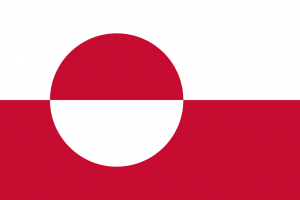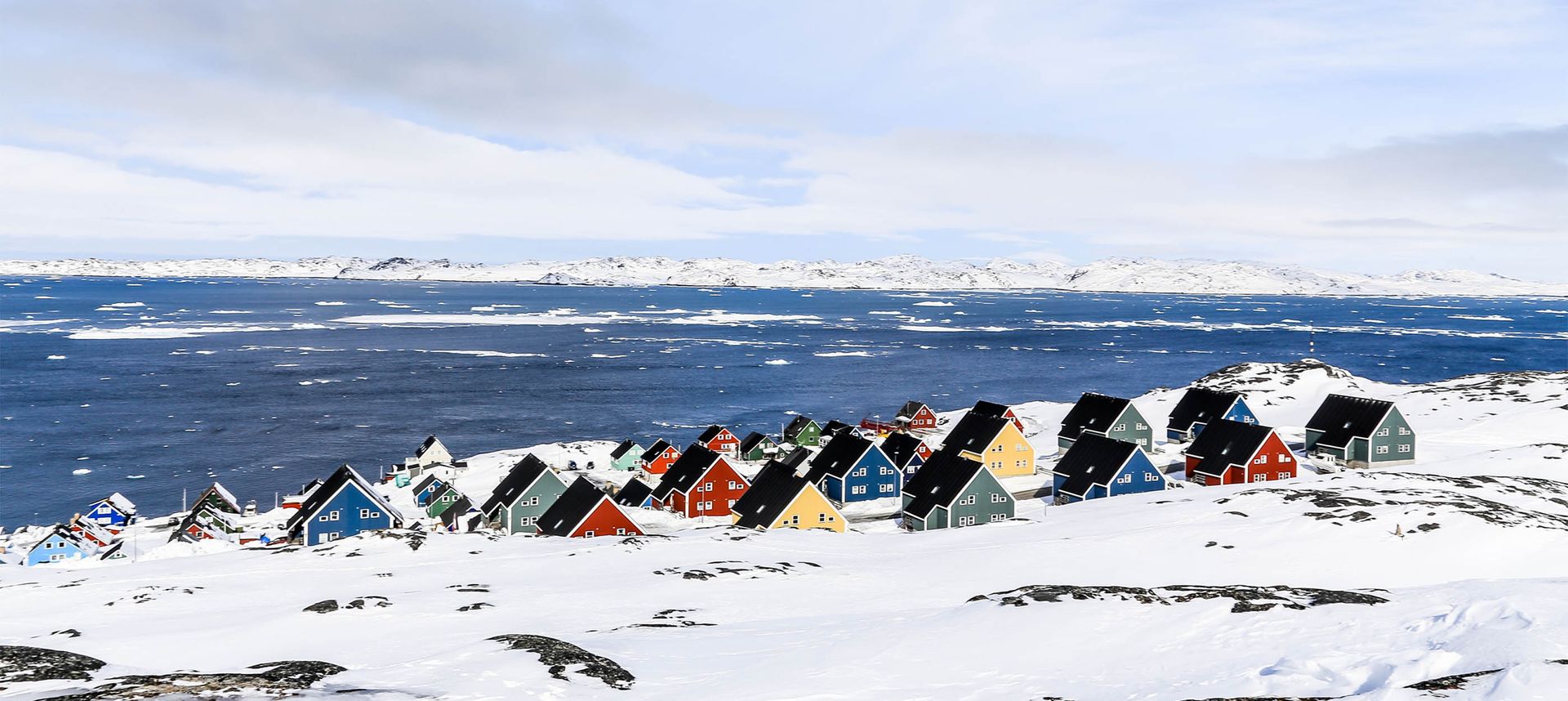Language/Kalaallisut/Culture/Greenland-Timeline
- 2500: start of settlement[edit | edit source]
Coming from Canada by the pack ice on the trail of musk oxen and caribou, the first inhabitants settled. Two distinct groups: in the south, around present-day Saqqaq, up to 800 BC. JC; in the north, around the Independence Fjord, to around 200 BC. JC.
- 700: the cultures of Dorset I and II[edit | edit source]
The earliest remains of this people in Greenland were found in Cape Dorset, Canada. We distinguish the culture of Dorset I, between 900 and 300 BC, and Dorset II, between - 400 and 1300 AD. JC (the probable inventors of the ulu, a round knife still used today by the Greenlanders).
982: the time of the Vikings[edit | edit source]
Banished from Iceland, explorer Erik the Red landed in the southwest of that land and christened the place Greenland ("green land") to encourage settlement.
1100: the culture of Thule[edit | edit source]
Inuit from Alaska and Canada settle in Thule (in the north of the island). They are the direct ancestors of the Greenlanders.
1450: end of the Viking age[edit | edit source]
The Vikings leave the island affected by a brutal cooling (which will last until the 20th century). For the next two centuries, only the Inuit remained, but European whaling ships continued to hunt in the area.
1721: the start of Danish rule[edit | edit source]
On behalf of the King of Denmark, Norwegian pastor Hans Egede establishes a mission on the west coast. Denmark then declared the island "Danish land". In 1728, he founded the first city, Godthåb, the future capital renamed Nuuk in 1979.
1904: the era of the great explorers[edit | edit source]
The first expedition by anthropologist Knud Rasmussen (Danish father and Inuit mother) reveals Inuit culture to the world. Other explorers followed, including the French Jean-Baptiste Charcot in 1926, Paul-Emile Victor from 1935 and Jean Malaurie in 1950.
1941: American military bases[edit | edit source]
Denmark is under Nazi occupation but Greenland chooses to turn to the United States. The Americans are building military bases there. That of Thule will be enlarged ten years later, during the Cold War, forcing the displacement of the Inuit.
1950: opening up to free trade[edit | edit source]
The Danish state monopoly on the trade in fishing and hunting products in force since the end of the 18th century has come to an end.
1973: an anti-colonial air[edit | edit source]
20% of Greenlanders buy the first album by Sumé, a rock group that sings in Greenlandic and denounces the forced assimilation into Danish culture.
1979: access to autonomy[edit | edit source]
Become a Danish province in 1953, the former colony obtained the formation of its own government and territorial assembly.
1985: already a "Groenxit"[edit | edit source]
Entering the European Economic Community with Denmark in 1973, Greenland left it following a referendum, due to a disagreement over fishing. A national flag is chosen.
2009: extended autonomy[edit | edit source]
A new statute allows Greenland to dispose of its natural resources. Copenhagen retains control of the military, currency and international relations.
2018: a major project to encourage tourism[edit | edit source]
A new international airport at Qaqortoq, extended airstrips at Nuuk and Ilulissat are planned by 2023. Investment: 480 million euros.
August 2019: Donald Trump announces that he would like to "buy Greenland"[edit | edit source]
The American president having set his sights on the immense Danish autonomous territory, the Greenlandic authorities had to remind that their island was not for sale.
Source[edit | edit source]
- https://fr.wikipedia.org/
- https://www.geo.fr/voyage/le-groenland-en-15-dates-une-ile-habitee-depuis-4500-ans-198003


